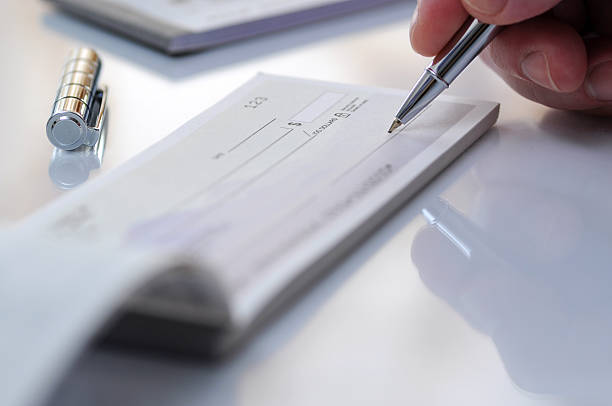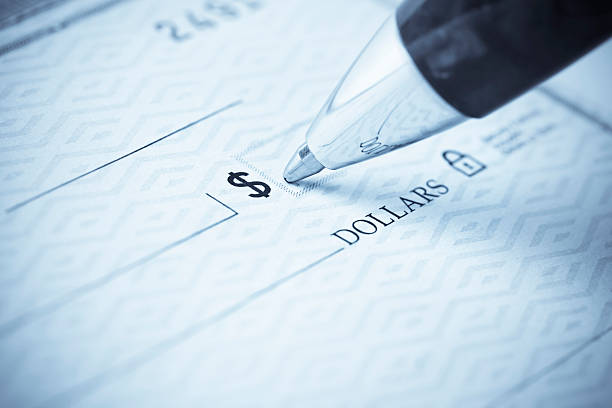How to Use a Checking Account – A checking account is a type of bank account that allows you to easily deposit and withdraw money for your everyday expenses. Unlike a savings account, which is meant for long-term goals, a checking account is designed for frequent transactions.
READ ALSO
- Enterprise Risk Management Plan (ERM) – All You Need to Know
- Insurance Liability Car: What You Need to Know
- Jones Act Law: What You Need to Know
- Options Trading Lessons: A Beginner’s Guide
- Best Family Life Insurance Companies of 2023
- PenFed Business Account: A Guide for Non-Government Organizations
- How to Sell Your Home Quickly: 6 Tips for Success
- Cloud Servers for Business – Best In 2023
You can use a checking account to pay bills, make purchases, receive payments, and manage your cash flow. But how do you use a checking account effectively? Here are some steps to help you get started:
- Choose the right checking account for your needs. There are different types of checking accounts, such as basic, interest-bearing, student, joint, or business checking accounts. Each one has its own features, benefits, and fees. You should compare different options and choose the one that suits your lifestyle, budget, and financial goals. For example, if you want to earn some interest on your balance, you might opt for an interest-bearing checking account. If you want to avoid monthly fees, you might look for a free or low-cost checking account.
- Open a checking account at a bank or credit union. You can open a checking account online or in person at a branch. You will need to provide some personal information, such as your name, address, Social Security number, and identification. You will also need to make an initial deposit, which can vary depending on the bank and the type of account. Some banks may also run a credit check or use a verification system called ChexSystems to see if you have any negative banking history.
- Set up direct deposit for your income sources. Direct deposit is a convenient way to have your paycheck, government benefits, or other payments automatically deposited into your checking account. This can save you time and hassle of cashing or depositing paper checks. It can also help you avoid fees and access your money faster. To set up direct deposit, you will need to provide your bank account number and routing number to your employer or payer.
- Learn how to access and use your checking account. Once you have a checking account, you can use various methods to deposit and withdraw money, such as:
- Write checks: A check is a written order instructing your bank to pay money to an individual or entity. To write a check, you need to fill out the date, the payee’s name, the amount in words and numbers, your signature, and any memo or note. You can then give the check to the payee or mail it to them. Make sure you have enough funds in your account to cover the check amount and avoid bouncing checks.
- Deposit paper checks using a mobile app: If you receive a paper check, you can use your bank’s mobile app to deposit it into your checking account. You just need to take a photo of the front and back of the check and follow the app’s instructions. This can save you a trip to the branch or ATM and allow you to access your funds sooner.
- Make purchases with a debit card: A debit card is a plastic card that is linked to your checking account. You can use it to make purchases online or in person at stores that accept cards. When you use a debit card, the money is deducted from your checking account immediately or within a few days. You can also use your debit card to withdraw cash from ATMs or get cash back at some retailers.
- Make withdrawals and deposits with your ATM card: An ATM card is similar to a debit card, but it can only be used at ATMs. You can use it to withdraw cash from your checking account or deposit cash or checks into your account. You will need to enter your PIN (personal identification number) to access your account at an ATM.
- Visit your local branch: You can also visit your local bank branch to make withdrawals and deposits with a teller. You will need to show your identification and fill out a withdrawal slip or deposit slip with the amount and your account number.
- Use online banking or mobile banking: Online banking and mobile banking are services that allow you to access and manage your checking account through the internet or your smartphone. You can use them to check your balance, view your transactions, transfer money between accounts, pay bills online, send or receive money via electronic transfer or wire transfer, and more.
- Keep track of your checking account activity and balance. It is important to monitor your checking account regularly and make sure you have enough money in it to cover your expenses and avoid fees. You can use online banking or mobile banking to check your balance and transactions anytime. You can also sign up for alerts or notifications from your bank that inform you of any activity or changes in your account. You should also review your monthly statements from your bank and report any errors or unauthorized charges as soon as possible.
- Avoid fees and charges on your checking account. Checking accounts can have various fees and charges associated with them, such as monthly maintenance fees, overdraft fees, ATM fees, foreign transaction fees, etc. These fees can add up and eat into your money. You can avoid or minimize these fees by:
- Maintaining a minimum balance: Some checking accounts require you to keep a certain amount of money in your account to avoid a monthly fee. You should check the terms and conditions of your account and make sure you meet the minimum balance requirement.
- Avoiding overdrafts: An overdraft occurs when you spend more money than you have in your checking account. This can result in an overdraft fee from your bank and a returned item fee from the payee. You can avoid overdrafts by keeping track of your balance and transactions, setting up alerts or notifications, and using overdraft protection services, such as linking your checking account to a savings account or a line of credit.
- Choosing a free or low-cost checking account: Some checking accounts do not charge any monthly fees or have very low fees. You can compare different options and choose the one that fits your budget and needs.
- Using your bank’s ATMs or network: Some banks charge you a fee for using an ATM that is not owned by them or part of their network. You can avoid this fee by using your bank’s ATMs or finding ATMs that are in their network. You can also use your debit card to get cash back at some retailers without paying a fee.
- Avoiding foreign transactions: Some banks charge you a fee for using your debit card or ATM card in a foreign country or currency. You can avoid this fee by using cash, traveler’s checks, or a credit card that does not charge foreign transaction fees when traveling abroad.
- Use your checking account to achieve your financial goals. A checking account can help you manage your money and achieve your financial goals, such as saving, investing, paying off debt, etc. You can use your checking account to:
- Automate your finances: You can use online banking or mobile banking to set up direct deposit, automatic transfers, and recurring payments. This can help you save time and hassle, avoid late fees, and stick to your budget.
- Build credit: You can use your checking account to pay your bills on time and in full every month. This can help you build a positive payment history, which is one of the most important factors in your credit score.
- Earn rewards: Some checking accounts offer rewards programs that allow you to earn points, cash back, or other benefits for using your debit card or making certain transactions. You can use these rewards to save money or treat yourself.
- Save for emergencies: You can use your checking account to set aside some money every month for emergencies, such as unexpected medical bills, car repairs, or job loss. Having an emergency fund can help you avoid going into debt or dipping into your savings when faced with a financial crisis.
- Save for goals: You can use your checking account to save for specific goals, such as buying a home, going on vacation, or starting a business. You can create separate subaccounts within your checking account or link it to a savings account and transfer money regularly.
In Conclusion, A checking account is a useful tool for managing your money and achieving your financial goals. By following these steps, you can use a checking account effectively and make the most of its features and benefits.
How to Use a Checking Account: Frequently Asked Questions (FAQs)
- How to choose a bank or credit union for your checking account
- How to protect your checking account from fraud and identity theft
- How to switch or close your checking account
- How to resolve problems or disputes with your checking account
- How to optimize your checking account for tax purposes
Protecting your checking account from fraud and identity theft is a crucial step to safeguard your money and personal information. Fraudsters and hackers can use various methods to try to access your account, such as phishing, malware, fake checks, or identity theft.

